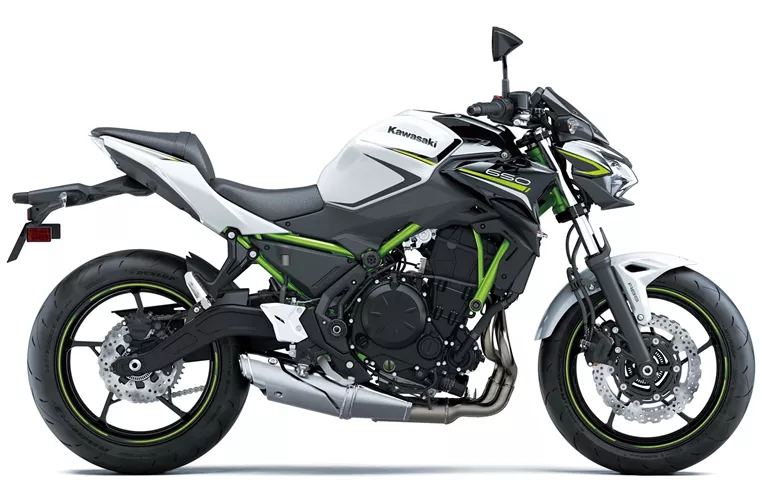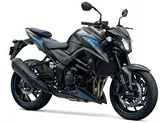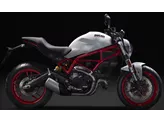Kawasaki Z900 2017 vs. Kawasaki Z650 2020

Kawasaki Z900 2017
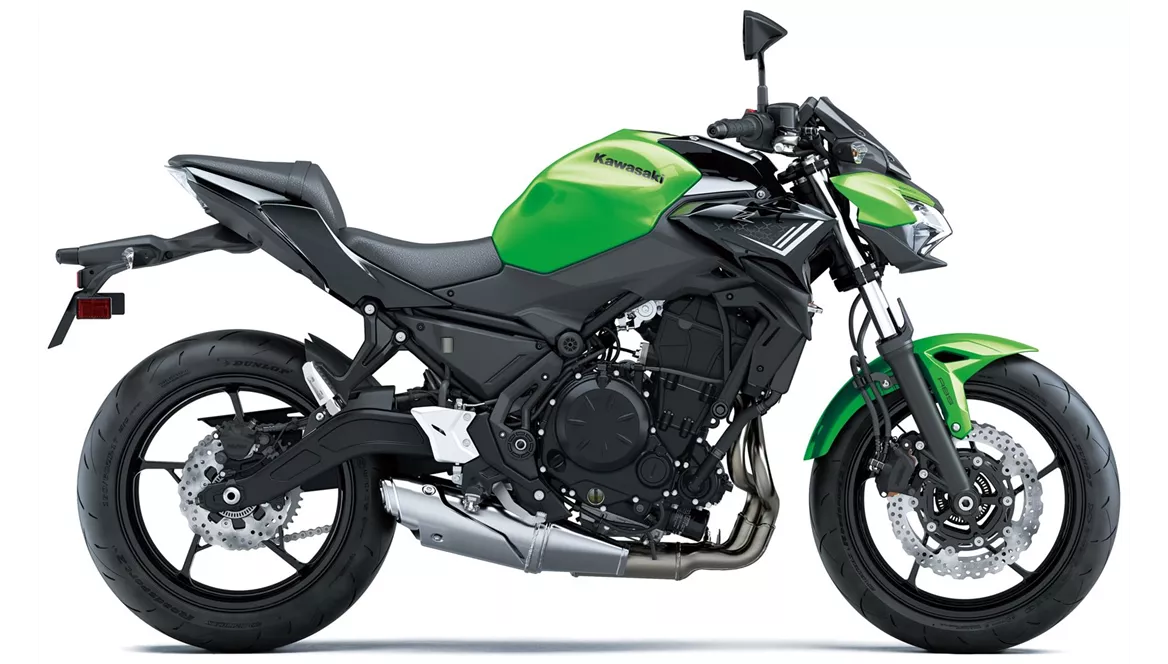
Kawasaki Z650 2020
Vue d’ensemble - Kawasaki Z900 2017 vs Kawasaki Z650 2020
The Kawasaki Z900 model year 2017 and the Kawasaki Z650 model year 2020 are both naked bikes from Kawasaki, but they have some significant differences in terms of technical specifications and strengths.
Starting with the Kawasaki Z900 2017, it is equipped with a powerful in-line 4-cylinder engine that produces 125.4 HP of power and 98.6 Nm of torque. The engine is fuel-injected and has a displacement of 948cc. The bike features a steel double cradle frame, which provides stability and durability. It has an upside-down telescopic fork front suspension and a swing arm rear suspension with a monoshock absorber. The front brakes are double disk with a diameter of 300mm and four pistons, while the rear brakes have a single disk. The bike also comes with ABS as an advanced rider assistance system. The dimensions and weights include a wheelbase of 1450mm, a seat height of 795mm, and a kerb weight of 210kg with ABS.
On the other hand, the Kawasaki Z650 2020 is equipped with a 2-cylinder in-line engine that produces 68.2 HP of power and 65.7 Nm of torque. The engine is also fuel-injected and has a displacement of 649cc. The bike features a steel tubular frame, which provides stability and strength. It has a telescopic fork front suspension and a swing arm rear suspension with a monoshock absorber. The front brakes are double disk with a diameter of 300mm and double pistons, while the rear brakes have a single disk. Like the Z900, the Z650 also comes with ABS as an advanced rider assistance system. The dimensions and weights include a wheelbase of 1410mm, a seat height of 790mm, and a kerb weight of 187.1kg with ABS.

Kawasaki Z900 2017
In terms of strengths, the Kawasaki Z900 2017 is praised for its ingenious naked bike chassis, superb looks, and a responsive engine with well-balanced torque. It is considered to be a perfect intersection of performance, price, and practical use.
On the other hand, the Kawasaki Z650 2020 is praised for its powerful two-cylinder engine, aggressive intake noise, compact dimensions, low seat height, stable chassis, and a TFT display with connectivity. It is also noted for its grown-up look, appealing to riders who want a more mature aesthetic.
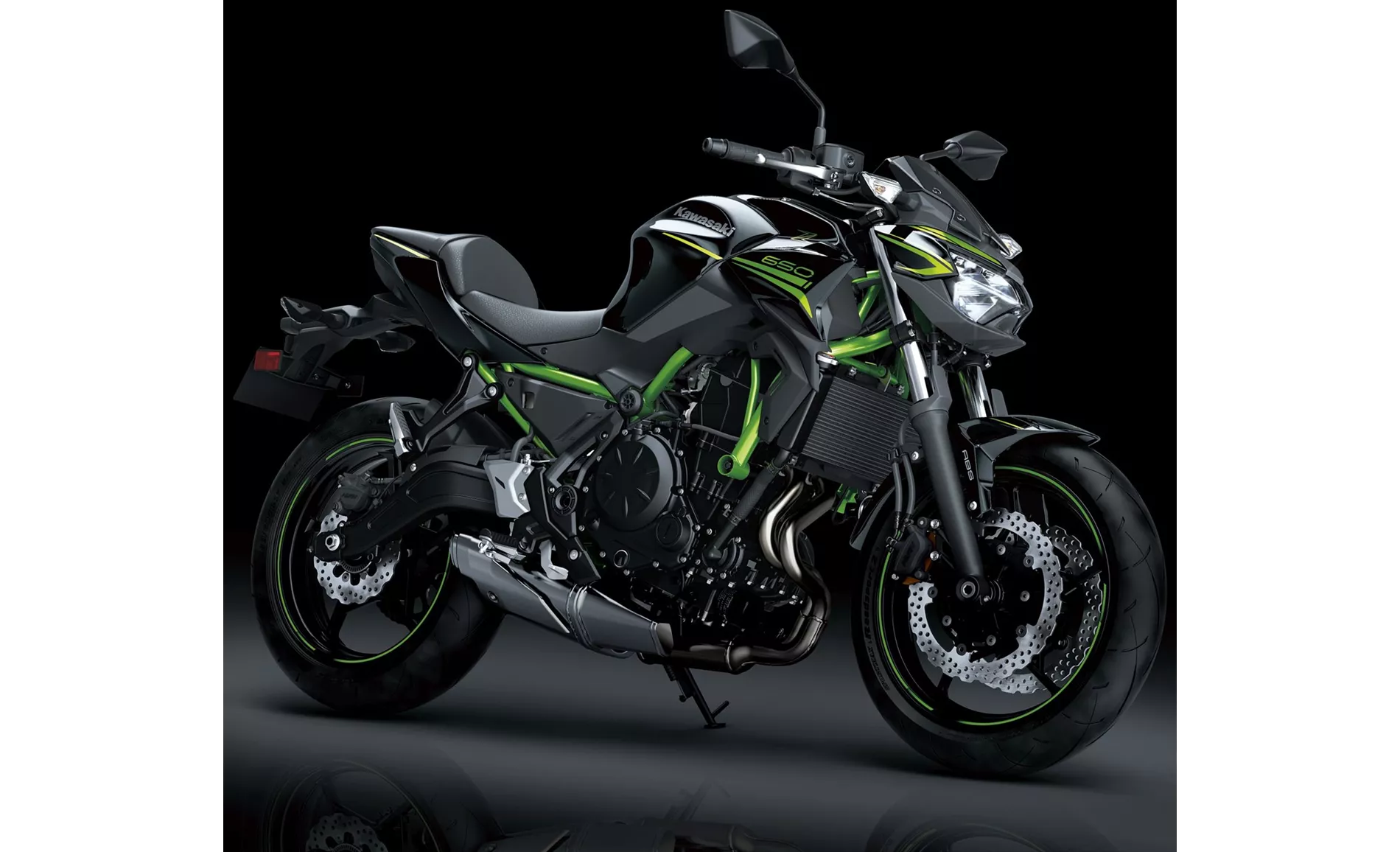
Kawasaki Z650 2020
However, both bikes have their weaknesses. The Kawasaki Z900 2017 is criticized for its narrow knee angle, which may be uncomfortable for tall riders. It is recommended for tall riders to consider ordering a different seat for better comfort.
The Kawasaki Z650 2020, on the other hand, has some weaknesses such as a front brake pressure point that may not be to everyone's liking. It is also noted that it may be uncomfortable for tall riders, and the Rideology App is not considered to be 100% sophisticated.
In conclusion, the Kawasaki Z900 2017 and the Kawasaki Z650 2020 are both impressive naked bikes from Kawasaki, each with their own strengths and weaknesses. The Z900 offers a more powerful engine and a larger displacement, while the Z650 offers a more compact and agile package with a lower seat height. Ultimately, the choice between the two will depend on the rider's preferences and priorities.
Caractéristiques techniques Kawasaki Z900 2017 par rapport à Kawasaki Z650 2020
Avantages et inconvénients en comparaison
Avantages et inconvénients en comparaison
Kawasaki Z900 2017

Une moto très réussie. Elle est le fruit de nombreux tests et d'un grand souci du détail. Elle a exactement la bonne puissance, exactement le bon châssis et exactement le bon look. Une nakedbike parfaitement réussie qui te rendra heureux pendant longtemps. Si tu veux, tu peux la conduire simplement et fidèlement, mais si tu le souhaites, elle peut aussi être ultra-rapide et vrombir méchamment. Superbe !
Kawasaki Z650 2020
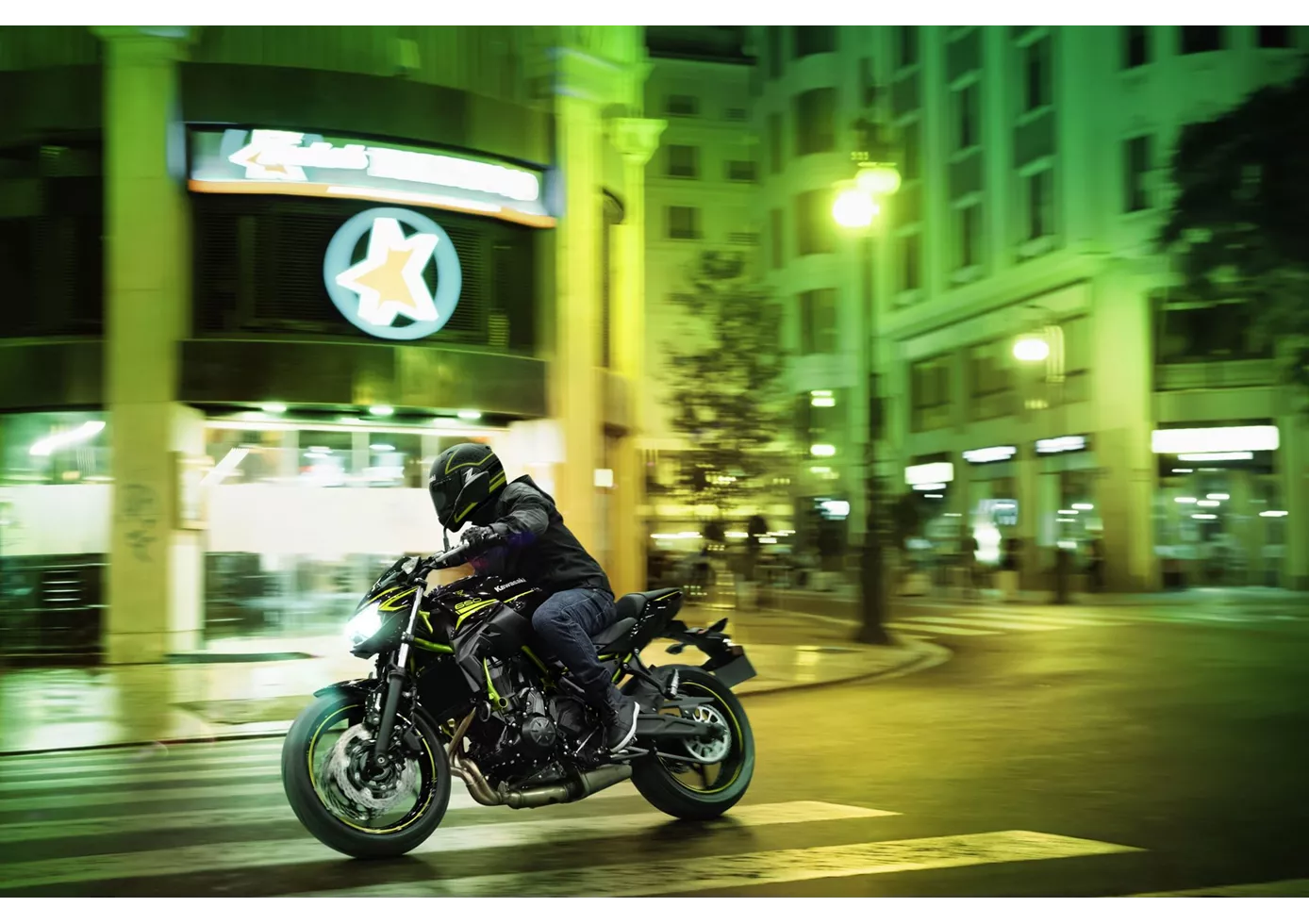
La nouvelle Z650 de Kawasaki est tout simplement un paquet complet. Les composants techniques ne sont peut-être pas à la hauteur, mais combinés entre eux, ils donnent une moto agréablement neutre, avec laquelle tout le monde aura beaucoup de plaisir. Pas de bizarreries - simplement une moto naked qui fonctionne vraiment bien sur les routes de campagne sinueuses. L'écran TFT, que nous ne trouvons pas encore chez la concurrence, ainsi que l'aspect adulte, qui s'inspire fortement des modèles Z plus grands, sont bien sûr des atouts supplémentaires. Seul le point de pression du frein avant aurait pu être plus clairement défini - mais dans cette catégorie de prix, on ne peut pas tout avoir.
Comparaison des prix Prix moyen du marché Kawasaki Z900 vs Kawasaki Z650
There are a few key differences between a Kawasaki Z900 2017 and a Kawasaki Z650 2020. In terms of price, the actual average price of a Kawasaki Z900 2017 is about 38% higher. A Kawasaki Z900 2017 experiences a loss of 520 USD in one year of ownership. This is offset by a loss of 30 USD for a Kawasaki Z650 2020. Compared to Kawasaki Z650 2020 there are more Kawasaki Z900 2017 bikes available on the 1000PS.de Marketplace, specifically 43 compared to 21. It takes less time to sell a Kawasaki Z650 with 80 days compared to 85 days for the Kawasaki Z900. Since model year 2017 1000PS.de editors have written 46 reviews for the Kawasaki Z900 and 31 reviews for the Kawasaki Z650 since model year 2017. The first review for the Kawasaki Z900 was published on 11/11/2016 and now has more than 93,200 views. This compares to more than 25,000 views for the first review on Kawasaki Z650 published on 11/8/2016.

